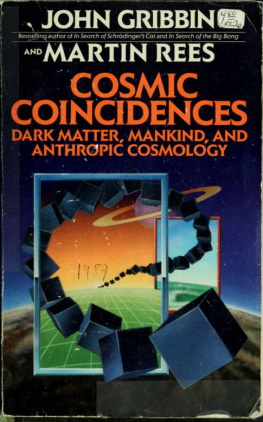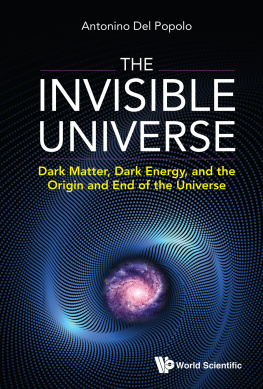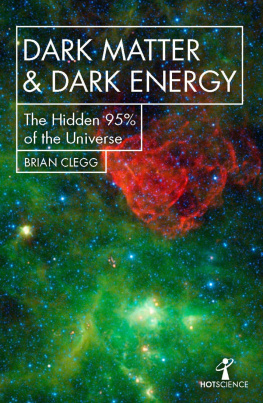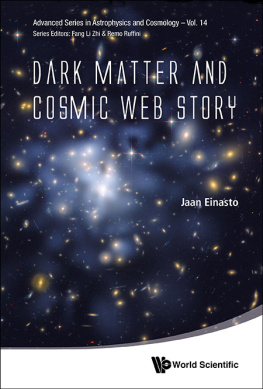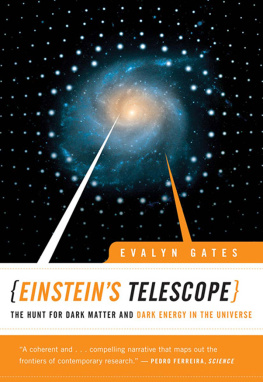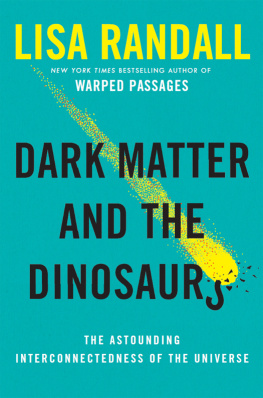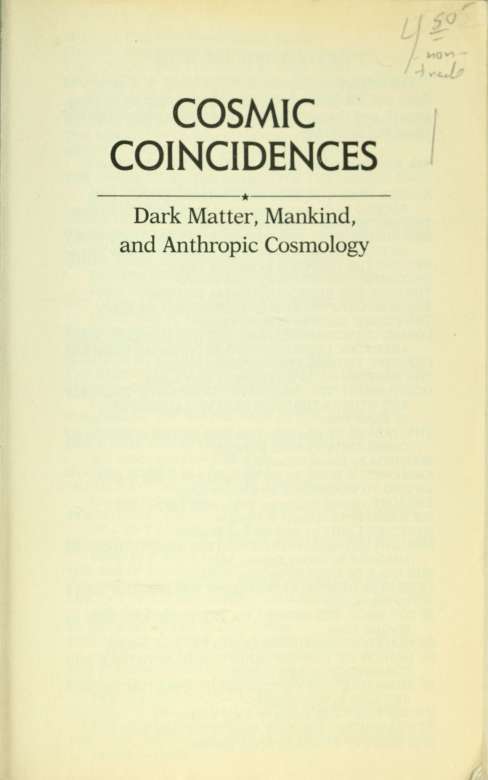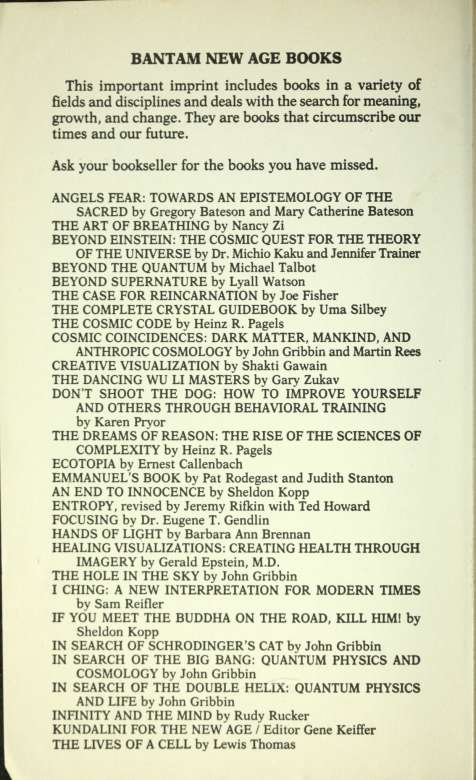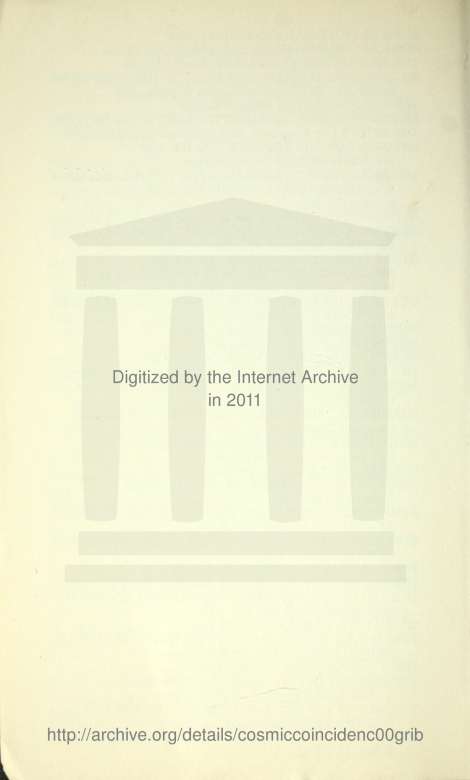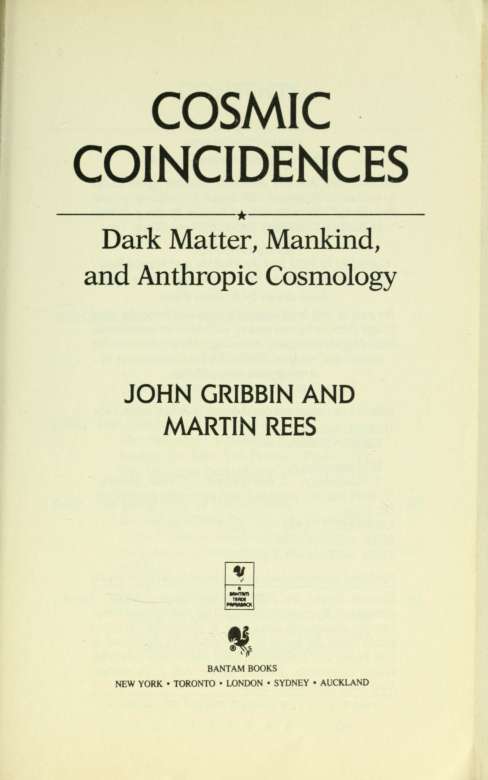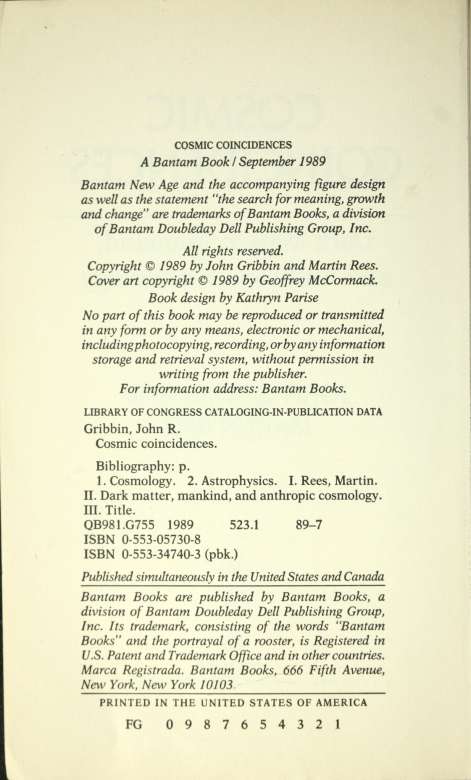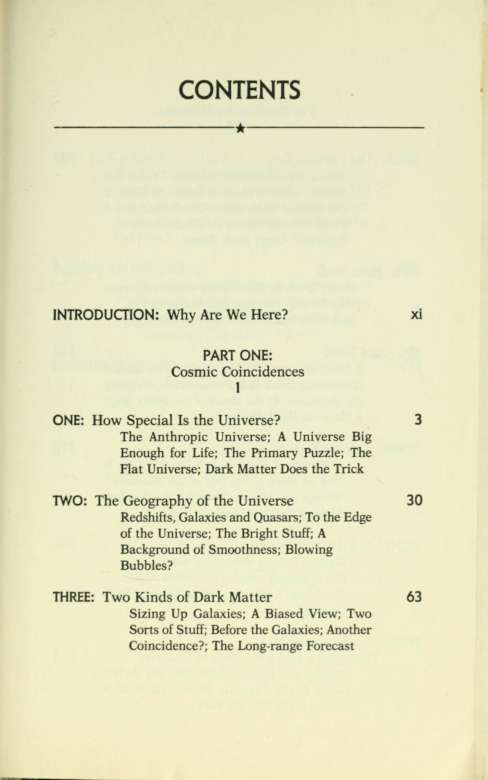This book made available by the Internet Archive.
PART TWO:
The Stuff of the Universe
FOUR: The Particle Zoo 103
Sizing Up Neutrinos; Missing Links; The Axion; Supersymmetric Partners; Making the Most of Monopoles; Quark Nuggets; A Black Hole Bonanza; Do Black Holes Explode?; Great Dark Hopes
FIVE: Halo Stuff 132
Dusky Dwarfs; Black Hole Beasts; Baryons May Be Cool; Making Mountains Out of Molehills; More Answers Than Questions
SIX: Core Stuff 152
A Brief History of Black Holes; The Quasar Connection; Black Hole Powerhouses; Weighing the Evidence; At the Heart of the Milky Way; A Flare for Black Holes
SEVEN: Cosmic String 175
A Theory of Everything?; Breaking Up Is Not So Hard to Do; Out of the Shadows?; Strings and Things; Trapping the Vacuum; Making Galaxies; Seeking Strings
EIGHT: Gravity's Telescopes 202
Making Waves; Measuring Waves; Gravitational Lenses; Luminous Arcs; Shedding Light on Dark Matter; Dark Galaxies
NINE: The Lyman Forest:
Emergence and Evolution of Galaxies 223
Quasars and Lyman Alpha; Into the Forest; Large Scale Lessons; Heavy Signs of a Galaxy Wall; Into the Past
PART THREE:
The Bespoke Universe
TEN: Tailor-Made for Man? 241
The Beryllium Bottleneck; Hoyle's Anthropic Insight; The Stellar Pressure Cooker; The Supernova Connection; A Cosmic Connection; Space, Time, and the Universe; An Alternative Universe
ELEVEN: Or Off the Peg? 270
The Quantum Realities; Inflation in a Nutshell; Bubbles on the River of Time; Cosmic Dragons; The Philosophy of Cosmology; The End of Physics?
INTRODUCTION
Why Are We Here?
THERE ARE three motives for studying the Universe. The first is discovery: to learn what's out there, whether in our own Solar System or in the extragalactic realm. This vicarious explorationof the surface of Mars, or the patterns of spiral galaxiesis something a wide public can share.
For the astrophysicist, this exploration is preliminary to a second goal: to understand and interpret what we see, in terms of the laws of physics established here on Earth, and to place our entire Solar System in an evolutionary context that can be traced back to the birth of the Milky Way Galaxy, and beyondright back, indeed, to the initial instants of the so-called Big Bang with which our Universe began.
To the physicist, there is a third motive: The cosmos is a "laboratory" offering more extreme conditions than can be simulated on Earth. Known laws can be tested, perhaps to the breaking point, by applying them, for instance, to the amazing densities of neutron stars; and a better understanding of the astounding temperatures and energies of the Big Bang could reveal new laws. Essentially all that we know about gravityone of the four fundamental forces, and the one that controls the motions of stars, gal
axies, and the entire expanding Universecomes from astronomy.
Astronomy is, of course, an old pursuitperhaps it was the first science to become professionalisedbut it has greatly enlarged its scope during the past two decades. Recent progress has been largely "driven" by experimental and observational advances. No armchair theorist, even equipped with current physical knowledge, could have envisaged the extraordinary phenomena and objects that have been discovered. This burgeoning is due partly to technical improvements in optical astronomy, but even more to the new windows on the Universe opened up by radio astronomy and by observations from space. Valuable data are also obtained in other waysfrom underground neutrino detectors and gravitational-wave experiments. There are few branches of terrestrial physics, indeed, that do not find application somewhere in astronomy.
In this book, we have (especially in the middle section) described those recent developments that we have found (from our experience of lecturing and writing) that seem to fascinate nonspecialists most. We aim to answer the questions that we most often are asked. Few of these topicsquasar spectra, protogalaxies, gravitational lenses, gravitational waves, and cosmic stringshave yet been given due prominence in nontechnical publications. On the other hand, stories such as that of black holes are not emphasised here because such exotic objects have become so familiar from the many excellent books that already exist.
All these topics relate to a single overall conclusion something that has as much right to be called a paradigm shift as anything in twentieth-century astronomy. This is the realisation that the dynamics of our Universe, and of all the galaxies in it, are controlled not by what we see but by dark matter. Only 10 percent (at most) of the Universe shines; what we see is a biased
and incomplete sample of the Universe's overall contents. Without the dark matter, our Universe would be a very different place: Dark matter controls the structure and eventual fate of the Universe. Discovering what the "dark stuff" is surely rates as the number-one problem confronting cosmologists today.
The search for a solution to this puzzle is a natural development from recent discoveries in cosmology that have been reported in earlier books. A fuller description of Big Bang cosmology and the expanding Universe can be found in In Search of the Big Bang; the ultimate fate of the Universe, and evidence that dark matter does indeed exist, are discussed in detail in The Omega Point. Here, moving on from such discoveries, we are more concerned with the exact nature of the dark matter, the stuff of the Universe, than with the detailed proof that there is some sort of dark matter around.
It is no exaggeration to say that we would not be here to wonder at the Universe if the dark stuff were not around. We can imagine ways in which the Universe might have emerged from the Big Bang without this background sea of stuff, so that stars, galaxies, and creatures like us would never have been produced. And yet we are here, and this relates to the second main theme of our book.
Science deals mostly with complex manifestations of laws that in essence are well knownthe real scientific challenge lies in understanding the rich complexity inherent in these phenomena. Cosmology and particle physics are, however, the two frontier areas, where even the basic laws are still mysterious. iMoreover, deep interconnections are becoming apparent between these two endeavoursthe study of the cosmos and of the microworld. For example, the dark matter that dominates the Universe is probably in the form of myriads of tiny particles whose individual properties can be understood only in microphysical terms.

